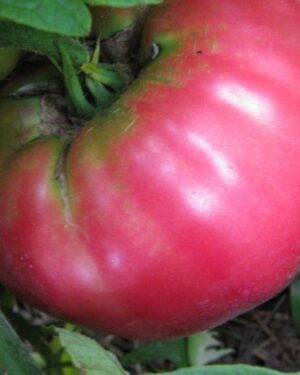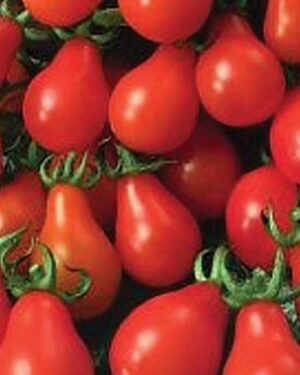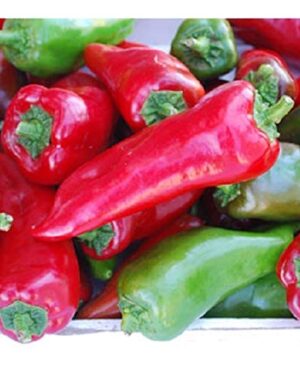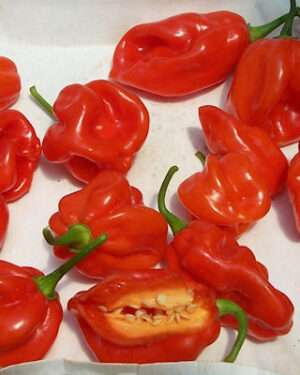Description
Courgette Trombetta D Albenga
Courgette Trombetta D Albenga An Heirloom Italian climbing Courgette / Summer Squash producing numerous lime green fruits. With a curvaceous trumpet shape best harvested at 12-15 Inch long.
Cultivation Advice
- Choose well-draining, fertile soil enriched with organic matter. Prior to planting, amend the soil with compost or well-rotted manure to improve fertility.
- Select a sunny location with soil temperatures consistently above 60°F (16°C). Plant seeds or seedlings with appropriate spacing, providing enough room for the vigorous vines.
- As Trombetta D-Albenga is a vining variety, provide sturdy trellises, cages, or supports for the vines to climb and sprawl.
- Maintain consistent soil moisture, especially during flowering and fruiting stages. Water deeply but infrequently to encourage healthy root growth.
- Apply mulch to retain moisture and suppress weed growth. Regularly remove weeds to minimize competition for nutrients.
- Use compost or balanced organic fertilizers during the growing season to provide essential nutrients for vigorous vine growth.
- Monitor for pests and diseases regularly. Employ organic pest control methods and consider introducing beneficial insects to manage pest populations.
- Harvest Trombetta D-Albenga when they’re young and tender, typically around 12-18 inches (30-45 cm) in length, for best flavor. Regular harvesting encourages continual fruiting.
- Consume harvested Trombetta D-Albenga promptly for optimal taste. If storing, keep them in a cool, dry place or refrigerate for a few days in a perforated plastic bag.
- Ensure warm soil temperatures for optimal growth, as courgettes prefer soil around 70°F (21°C). Protect young plants from cold temperatures and frost.
- Help in pollination by gently shaking the flowers or introducing pollinators like bees, especially if natural pollinators are limited.
- Maintain even soil moisture throughout the growing season, especially during flowering and fruiting stages. Avoid overwatering, which can lead to waterlogged soil.
- Provide sturdy supports like trellises or stakes to guide the vines. Train the vines for vertical growth to save space and improve air circulation.
- Consider planting companion plants like marigolds or basil to repel pests and attract beneficial insects that assist in pollination.
- Encourage good airflow around the vines to minimize the risk of diseases like powdery mildew. Prune excess foliage if needed to improve airflow.
- Utilize natural remedies like neem oil or insecticidal soap to deter pests. Implement physical barriers or netting to protect plants from pests.
- Continuously harvest mature courgettes to encourage new fruit production. Overgrown courgettes may hinder further flowering and fruiting.
- Regularly add compost or organic matter to the soil to replenish nutrients and maintain soil structure.
- Understand the growth habits and characteristics of Courgette Trombetta D-Albenga for proper cultivation and support.
- Ensure the vines receive adequate sunlight exposure, preferably 6-8 hours of direct sunlight daily, for healthy growth and fruit production.
- Conduct routine inspections for signs of pests, diseases, or nutrient deficiencies. Timely intervention helps prevent issues from escalating.
- Utilize watering methods that target the root zone, such as drip irrigation or soaker hoses. Water in the morning to allow foliage to dry, reducing disease risks.
- Practice crop rotation annually to mitigate soil-borne diseases and pests. Avoid planting courgettes in the same area consecutively.
- Train the vines to climb efficiently using trellises or supports. Prune excess foliage to promote better airflow and light penetration.
- Cultivate flowers and herbs that attract beneficial insects like ladybugs or hoverflies, which can assist in controlling pest populations.
- Apply compost tea regularly to provide additional nutrients and beneficial microbes to the soil and plants.
- Monitor and refresh mulch regularly to retain moisture, suppress weeds, and maintain soil temperature.
- Harvest courgettes at the optimal size to encourage continuous fruit production. Overripe courgettes can affect the plant’s productivity.
- Consume harvested courgettes promptly for the best taste and texture. If storing, refrigerate them in a perforated plastic bag to maintain freshness.
- Allow a few courgettes to mature fully on the vine if you plan to save seeds. Properly dry and store seeds in a cool, dry place for future planting.









Reviews
There are no reviews yet.